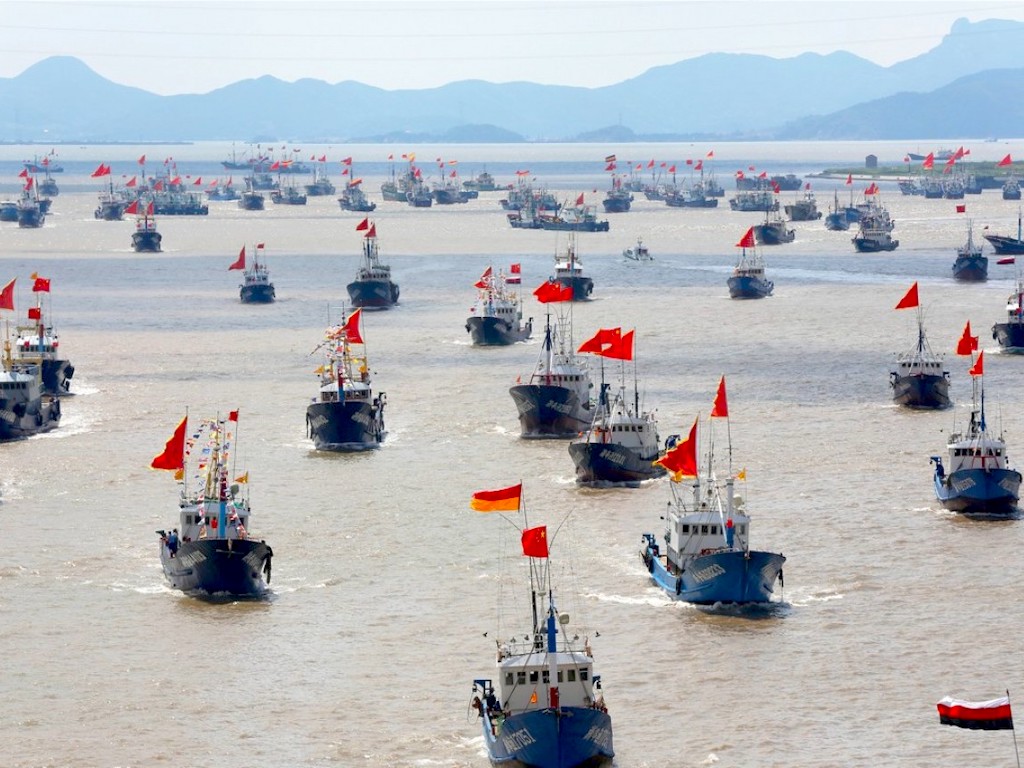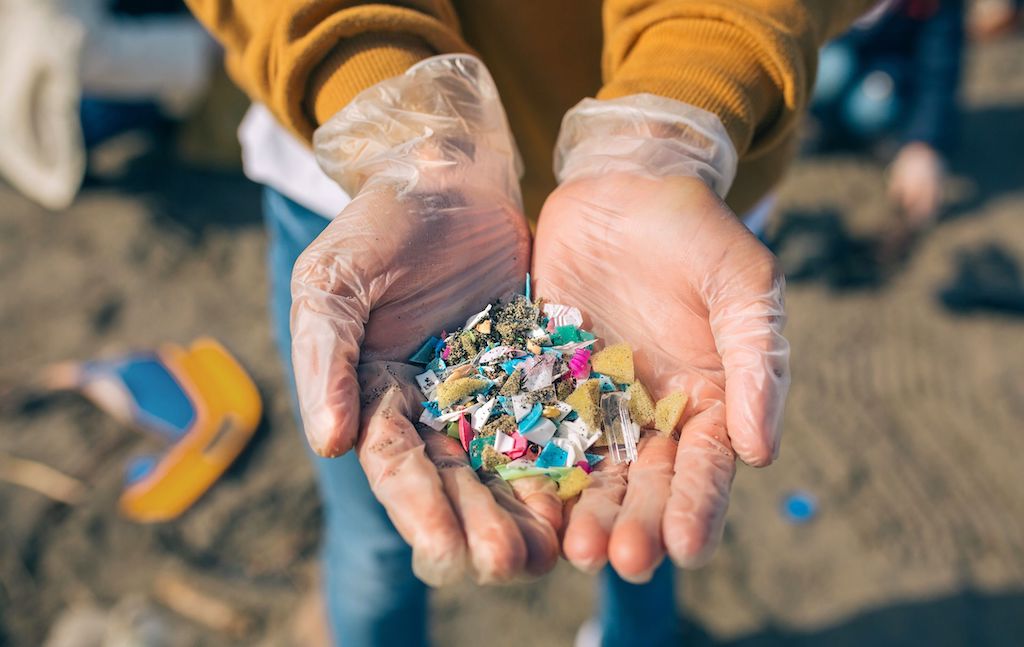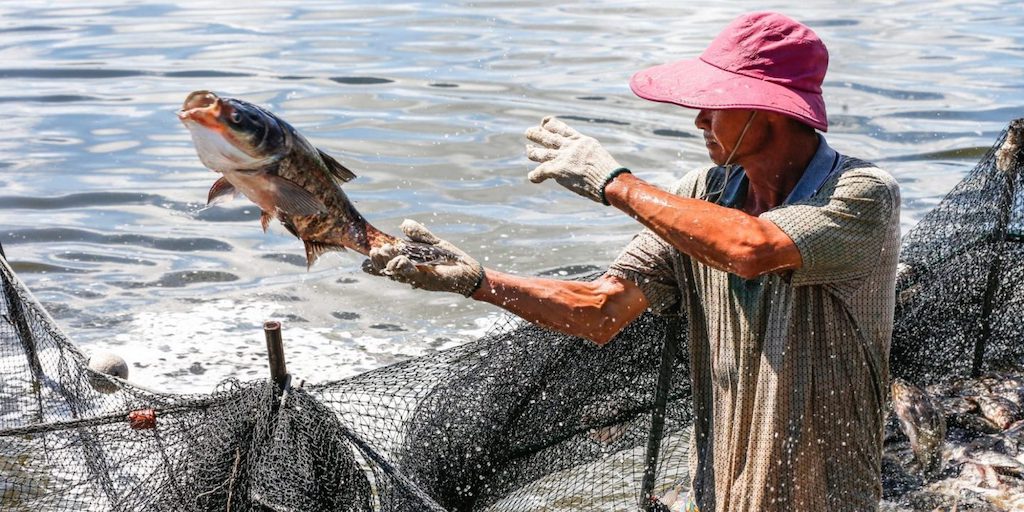7 Mins Read
Reducing seafood intake is one of the key ways you can help alleviate your negative effect on the planet, but there are also a host of other important reasons make a pass on fish for dinner.
From biodiversity loss to more frequent natural disasters and rising global temperatures, our planet is now at an important crossroads. In the face of this global crisis, lessening our impact on the limited environmental resources we have left requires careful consideration of our consumption choices. Looing for more reasons to drop seafood? Give these a thought.
1. Child Labour Is Endemic In The Fishing Industry
Did you know that seafood on your plate probably got there through child labour? According to the United Nations Food and Agriculture Organisation (FAO), around 60% of all children engaged in child labour globally are active within the agriculture sector, including in shimperies and aquaculture. Children are engaged in all types of work in the fishing industry, from catching seafood to repairing nets and other hazardous activities, which prevents them from attending school. And as global demand for seafood consumption continues to rise, the problem of child labour gets worse.

2. Cheap Seafood Is a Product of Modern Slave Labour
Thought that slavery is a thing of the past century? Well think again: the occurrence of labour exploitation and modern slavery within the seafood industry has been well documented. And the problem is especially prevalent in Southeast Asia – a report by the Human Rights Watch confirmed the embeddedness of forced labour and human rights abuses in the Thai fishing industry, the 4th largest seafood exporter in the world. Although subsequent awareness managed to pressure the Thai government to take some action, recent reports have revealed that widespread exploitation is still ongoing today. A 2017 study by the Issara Institute and the International Justice Mission found that 76% of migrant workers in the Thai fishing industry, mainly from Cambodia and Myanmar, have been held in debt bondage. Furthermore, media reports have arisen showcasing cases of labour abuse in fishing vessels all around the world, including the United States, China, and Taiwan.
3. Toxic Contamination Due To Industrial Chemical Runoff
Much of our waterways have become heavily polluted with raw sewage, contaminants from animal agriculture, and other harmful chemicals that runoff industrial waste. One of the common toxic industrial chemicals that have accumulated in some rivers, oceans and coastal areas is polychlorinated biphenyls (PCBs), which are often used to manufacture electrical devices like lights and kitchen appliances. These sediments almost never break down, and have been found at the bottom of waterbeds and inside tissues of fish, according to the Environmental Protection Agency (EPA). Consuming contaminated fish is the main culprit for PCB ingestion in humans, and studies have found a link between PCB intake and higher incidences of cancer.
There are also problems with other types of contamination, namely sea lice, especially prevalent on salmon farms in Norway and Scotland, where most farmed salmon comes from.
4) Antibiotics and Pesticide Use Is Rampant
Due to severe depletion of fish populations due to overfishing, much of the fish that is on the market is farmed. Because thousands of fish are crammed within small areas in fish farms, making it easy for diseases and parasites to spread, farmers often add antibiotics and pesticides in the water. The relatively unrestricted use of some dangerous antibiotics, has encouraged the proliferation of antibiotic-resistant microbes, which means that disease outbreaks in humans are increasingly difficult to prevent over time. In addition, the consumption of antibiotic residues found in fish can be hazardous to humans, with associated effects including fertility issues, birth defects, weakened immune systems, and forms of cancers.

5. Demand For Seafood Results in Plastic Pollution (And Microplastics Consumption)
We all know that our oceans are suffering from a serious plastic pollution problem. As plastic erodes over time into tiny particles called microplastics, which become ingested by aquatic life, it ends up back into our food chain via human consumption of seafood. According to a study led by researchers from the University of Ghent in Belgium, seafood eaters consume up to 11,000 tiny pieces of plastic annually. Scientists from the study warn that these particles can become embedded in tissues, and can accumulate in the body over time to pose long-term health risks. Another study in 2016 found that because microplastics often come from plastic products that are manufactured with a range of harmful chemicals, there is good reason to be concerned about toxicity levels in seafood. Plus, a major contributor to plastic pollution in oceans comes from “ghost nets” from the fishing industry itself. Ghost nets refer to abandoned, lost, or discarded fishing nets, lines and traps, and these make up 640,000 tonnes of the waste scattered across the sea.
6. Seafood Industry Has Serious Traceability Problems
Traceability is a catch-phrase in the global seafood trade to refer to the ability to fully find the source or origin of a product, and the transactions between it being caught to the point of it being sold. This is important for food safety and the legality of a product – yet there remain no international global-body-backed standards available to track and document the traceability of seafood, which means that fraudulent mislabelling of seafood is rife.
Back in 2017, an investigation found that more than 50% of sushi fish in Los Angeles restaurants is mislabeled. A recent study by the Environmental Justice Foundation (EJF) conducted in South Korea found that more than half of all sushi samples and a third of fresh fish are wrongly labelled. Shockingly, not a single sample of Chinese white shrimp was the correct species, and many fish samples taken were in fact dolphin meat, which contains dangerously high levels of mercury. The lack of traceability in seafood has also meant that often, seafood that is mislabelled actually came from an endangered and protected species such as the finless porpoise. Importantly, the researchers warned that this is not just a problem in Korea, as much of the country’s seafood is in fact imported from China and Japan.
7. We’re OverFishing: Biodiversity Loss and Extinction
In a biodiversity report by the United Nations, one of the most commonly ignored reasons driving the mass loss of species is fishing and bycatch. Commercial fishing, backed up by powerful corporations, is responsible for wiping out fish surrounding developing nations, which deprives local communities of their main source of food, as well as crucially endangered species including sharks, turtles, dolphins, and more. Coastal fish farming for prawn and shellfish is even worse, as entire marine ecosystems get dredged up. You might also want to think twice about being reassured by a label that supposedly means seafood has been farmed according to sound practices.
Multiple reports have exposed how the Marine Stewardship Council certified tuna fisheries in Indonesia that have also caught and finned endangered sharks, and approved of scallop dredging that has destroyed seabeds. Biodiversity loss due to seafood consumption is a real issue – at our current rate, salt-water species are expected to go extinct by as soon as 2048. Once ocean extinction occurs, there is a ripple effect: ocean life is helping to detoxify water, and without it, shorelines and communities inhabiting the coast are seriously threatened.

8. Most Of The Fish You Consume Is Diseased With Sea Lice
Sea lice feed on the mucus, epidermal tissue, and blood of marine fish, and outbreaks of sea lice infestations have been reported on many fish farms touted as following “strict farming standards”. Last year, environmental campaigners have exposed the lack of regulations and controls on farmed Scottish salmon to be sold on the market, which have been left with open wounds caused by sea lice parasites and diseases. Some farms have responded by saying they have treated infested fish through “non-medicinal farming methods”, such as the use of wrasse (a smaller fish) to peck off sea lice. If that sounds appetising to you, go ahead.
9. There Is A Carbon Footprint Attached, Especially For Shellfish
You might think that only beef, lamb, or pork comes with a hefty carbon-tag, and that seafood is the better option for the planet. But think again—greenhouse gasses emitted due to seafood production has spiked in recent years due to increasing demand, especially for lobster and shrimp. In a study published in the journal Nature Climate Change, researchers found that ocean fishery vessels contribute to climate change due to the heavy use of fuel. Fishing for crustaceans, in particular, had the most carbon-intensive fleets. While fisheries do have a smaller carbon footprint than agriculture, as their emissions increase due to greater consumer tastes for shellfish – we have to take their contribution to rising global temperatures into account.
10. Plastic Packaging
To export and deliver fresh seafood from different fisheries around the world to your local supermarket, there is a lot of packaging involved. To prevent seafood from spoiling in hotter temperatures, transporting seafood requires refrigeration and is often packed in un-biodegradable styrofoam plastic boxes. Once processed and cleaned, for hygiene reasons, many supermarkets also individually pack fish in styrofoam trays that are then are wrapped in layers of cling film. Despite scientific studies finding harmful effects of polystyrene packaging materials on both marine life and human health, the low-cost and convenience of polystyrene packaging for exporting and importing seafood has meant that the fishing industry has continued its widespread use. So there you have it – the catch of the day you just ordered probably contributed to plastic waste pollution in our landfills and oceans.
Lead image courtesy of Pexels.




